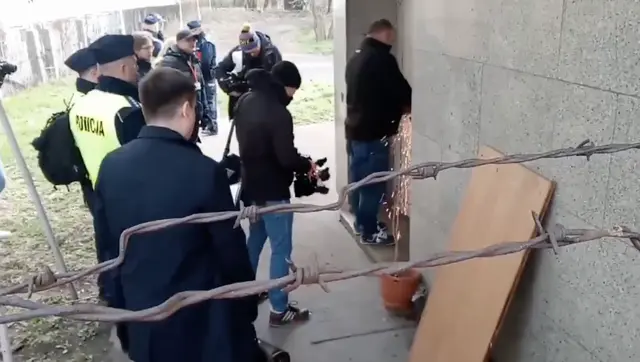A Warsaw building estate dubbed 'The Spy Nest' has been seized from the Embassy of the Russian Federation. The abandoned property Szpiegowo has now been officially declared under the city's control.
Following Szpiegowo's occupation by Polish officials, Russia's ambassador to Poland Sergey Andreev accused the Polish authorities of 'seizing diplomatic property' in Warsaw.
The Mayor of Warsaw Rafał Trzaskowski confirmed the city had taken back control, tweeting, "The bailiff has just finished work on the premises of Szpiegowo. The final report on today's activities is ready. It's official: we have regained the property at 100 Sobieskiego Street for the capital city of Warsaw."
The estate was built by the Polish government in the 1970s under a mutual agreement between Russia and Poland to each build homes for their respective ambassadors.
Russian diplomats lived in the estate until the 1990s, when the Soviet Union collapsed and diplomatic ties were cut. In 2008, after a decline of Russian officials coming to Warsaw, Poland began to question Russia's control of the buildings.
Thus began a decade-long battle over the estate.
In 2016, a Polish court ruled that Russia must give back the building, on the grounds it didn't have the authority to continue its ownership. But it wasn't until the conflict in Ukraine earlier this year that the authorities decided to appoint a bailiff, Tomasz Bratek, and regain control of the building.
Polish journalist Michał Wojtczuk has been following the contention surrounding the building for years. He says Russia's military action in Ukraine finally pushed Polish authorities to their limit.
"It was the straw that broke the camel's back," he tells CGTN. "Russia played us to no end, with no intention of giving back the building for years but it wasn't until now that our patience ran out".
The estate is made up of two 11-floor tower blocks that could house as many as 500 people. The Mayor of Warsaw plans to turn the building into flats for Ukrainian refugees as well as turning some of the floors into nurseries and a cultural center for Ukraine.
But with over two decades of neglect, the buildings will need to be fully refurbished if they are to be used as homes.
"The buildings are completely empty. They've been rotting for the last 20 years. There's a huge mess inside, the paint is peeling, the floorboards are rotting," says Wojtczuk.
A refurbishment on this scale could take as long as a year. And that could be even longer if the building continues to be protected by the Conservator of Monuments. Under its protection, any changes to the building need to firstly be reviewed before they are accepted – meaning it could take months before it can be used to house refugees.
Szpiegowo is just one building in Poland that was previously under Russian control. There are reportedly at least three more in Warsaw alone, including a school for children of Russian diplomats. It is unclear whether there are any plans for the city to take control of these properties at this time.
With the building's future still in question, the city braces itself for Russia's retaliation. The building's takeover puts further strains on the relationship between Russia and Poland.
(CGTN)
 简体中文
简体中文

